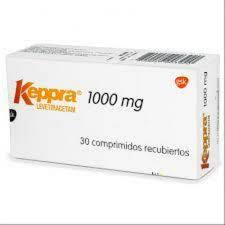Disclaimer: this article is for information only, it is not meant to diagnose or treat any medical condition.
Can homeopathy and alternative medicine help with dental conditions?
The answer is YES! Homeopathy is a complete system of medicine, therefore of course it can deal with just about anything! This doesn’t mean that you should stop going to your dentist or taking care of your dental hygene in the usual way! It just means that homeopathy is here to support whatever dental intervention you may need. When it comes to teeth and homeopathy, we all know that Chamomilla helps teething pain in babies, but when it comes to adults issues, what do we do?
Here are some examples:
Of course it is important to see a dentist as soon as possible if you are experiencing toothache, it is important to get it checked out and find out what the cause is. However, if it is not possible to see a dentist straightaway for whatever reason, here are some useful remedies to keep in mind.
Aconite (toothache after being out in a cold wind), Arnica (pain with bruising/soreness), Magnesium phosphate (pain shoots like lightning, worse with cold and better with warmth) and Silica (swollen face/glands, patient wants face to be warm) can also help.
A dental abscess is a collection of pus that can form inside the teeth, in the gums or in the bone that holds the teeth in place. It’s caused by a bacterial infection.
It can be very painful of course and when the type of pain is throbbing, the gum is swollen and red, Belladonna is the remedy to try.
If the swelling extends to the neck, Myristica can be very useful too.
Silica is great when the abscess has been there for a long time and it will hasten the discharge and healing. Hepar Sulph is useful in cases of recurring abscesses with production of pus.
Mercurius solubilis 6c is useful for bad breath as a result of sores, with excessive salivation. Pyrogenium can be used when there is pus present but without drainage. Bryonia is indicated when there is acute inflammation or if pricking pain is relieved by firm pressure. Pulsatilla can help, as with toothache, where the pain is accentuated by heat and relieved by cold water.
As we age, we all tend to get receding gums, but this can be easily preventable by gently massaging the gums with the toothbrush when we clean our teeth. However, in case of acute conditions, here is what you can do:
Breaking a tooth by accident often implies physical and emotional trauma. Therefore the first remedy that comes to mind is Aconite, followed by Arnica. When it comes to operations, Arnica is great for post-op pain relief and speed up healing. Ruta graveolens is indicated where the bone is injured in a dental procedure and for “dry socket”. Symphytum is also a medicine to think of, as it encourages the growth of tissue following dental trauma.
Did you know you can also get homeopathic mouth washes?
Helios makes homeoapthic mouthwashes, but you can make your own with Calendula and Hypericum in water with a bit of alcohol or apple cider vinegar as preservative. There are also other gargles available from natural health shops, with combinations of ingredients including tinctures of myrrh, propolis and krameria (also known as rhatany, a perennial shrub found in North and South America) and essential oils of cloves, eucalyptus and peppermint.
Does mint toothpaste antidote remedies? The jury is still out there. I always advise patients to wait 15 minutes after teeth cleaning before taking the remedy. There are a number of companies providing “alternative” toothpastes, which also do not contain ingredients like fluoride, sweeteners, colourings or sodium lauryl sulphate. Salt toothpaste is a favourite. Herbal toothpaste is available for those who dislike the taste of salt. Kramaria is very beneficial for gums and many prefer its taste. Sanguinaria (bloodroot) is another favourite botanic ingredient. Other useful toothpastes contain aloe vera and propolis.
I wish I had known this when my mother was still with us. She was infamous for being terrified of the dentist. Seriously, she had to literally be dragged there, usually by one of her friends, who would come around the house and physically take her there. She was so petrified that she couldn’t move or speak, she became like a child, which was so weird for us kids! We were never scared of the dentist! Gelsenium would be have worked wonders!
For more information about consultation fees, please check here.
5G ADHD alternative medicine; asthma; autism autism; autoimmune black opal; boys candida; chemical exposure corona virus corona virus; depression detox diabesity diabesity; diabetes
diabetes; diet eczema; flu; gemstone remedies; gemstones; glasgow glyphosate gut-brain connection hashimoto; holistic homeopathy homeopathy;
hypothyroidism; IBS immune system leaky gut lockdown multiple chemical sensitivities nutrition potty training puberty skin issues; sleep supplements thyroid; tinnitus



No spam, notifications only about helpful homeopathy tips, homeopathy courses and new products!
The health benefits of Vagus Nerve Stimulation Vagus nerve stimulation (VNS) can offer several benefits, particularly for conditions like epilepsy, depression, and stroke recovery. It

HOMOTOXICOLOGY IS THE EVOLUTION OF HOMEOPATHY Homotoxicology is the study of what toxins do to the human body. This discipline was invented by Dr. Reckeweg

WHAT IS HOMOTOXICOLOGY AND HOW DOES IT WORK? Homotoxicology is the branch of medicine that seeks to identify the toxins in the body, then aid

IS HOMEOPATHY EQUALLY EFFECTIVE WHILE ON MEDICATION? A CASE OF EPILEPSY This is a bone of contention among homeopaths: I know some homeopaths who will